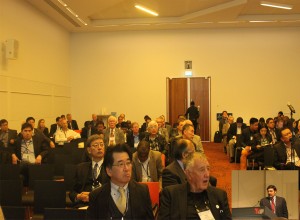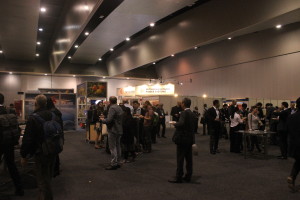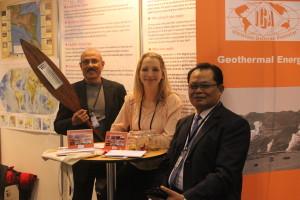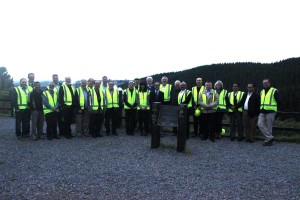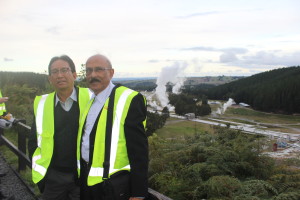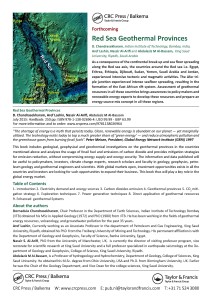“Today, over two billion people in developing countries live without any electricity. They lead lives of misery, walking miles every day for water and firewood, just to survive. What if there was an existing, viable technology, that when developed to its highest potential could increase everyone’s standard of living, cut fossil fuel demand and the resultant pollution Said Peter Meisen, President, Global Energy Network Institute in 1997. After 7 years the situation remained the same. In the annual meetings held in 2004, the World Bank President said “We must give higher priority to renewable energy. New and clean technologies can allow the poor to achieve the benefits of development without having to face the same environmental costs the developed world has experienced” World Bank President, Annual Meeting, 2004. Even after four years the situation has not changed in the rural sector of the developing countries. 90% of world population living in rural areas in developing countries have no access to basic needs like nutrition, warmth and light in spite of the fact that technologies for developing renewable energies jumped leaps and bounds and this is especially so with respect to geothermal.
This is especially true with respect to the countries around the Red Sea. It is very interesting to observe that geothermal resources are available in the countries rich in oil and gas resources and in those countries that have no oil and gas resources. Those countries that have rich geothermal resources like Eritrea, Ethiopia, Djibouti and Yemen, depend on imported fossil fuels to support their energy demand instead of developing naturally available geothermal resources. Thus their economic growth lies outside their country’s boundaries. Nasically some one else dictates your economic growth. These countries have no energy independence and energy security. Besides energy, these countries face acute shortage of fresh water because these countries receive scanty rainfall. Thus these countries have no food security as well. On the other hand, Saudi Arabia has surplus oil and gas resources and are not aware of the vast geothermal resources existing within the Saudi Arabian shield. Among the countries around the Red Sea, Saudi Arabia emits 4 billion tonnes of CO2 per year. Because Saudi Arabia has surplus fossil fuel reserves, the country is generating fresh water through desalination to support the demand from domestic and agricultural sectors at the cost of emitting about 13 Mt of CO2. This country is already experiencing change of weather pattern and increase in ambient temperature. Due to fresh water stress status, the country has adopted a policy to stop wheat production from 2016 onwards there by putting the country’s food security in other countries. This is a matter of serious concern. Thus rich poor countries have energy assets that have not been utilized and both countries have one common problem…….fresh water for the millions!! All the countries around the Red Sea have excellent hydrothermal and EGS (Enhanced Geothermal Systems) sources that can be developed. Technology to generate electricity from both the sources is matured and available off the shelf. Unlike other renewables, geothermal energy can supply base load power and > 90% online. In addition to power, this energy can support green house cultivation, dehydration of agricultural products. The most significant contribution that geothermal energy can make in these countries is to generate fresh water to meet the growing demand from domestic and agricultural sectors. Countries can be energy independent and can have food security and support the development of the rural region. In the next century these countries can become energy and water surplus countries and support other neighbouring countries to elevate the socio-economic status of the rural population. The book starts with an over look on the carbon intensity index under 6D 4D and 2D scenarios the world is currently debating and highlights the levalized cost of electricity generated by a variety of renewable energy sources like solar pv, wind, biomass and geothermal. The facts are open for anyone to judge the credibility of geothermal. All good things come with a premium so does geothermal! The most important message the authors make to the world community in the beginning is that energy and water dictates the future of any country……rich or poor.
Electricity markets, future electricity demand GDP growth and population in the countries around the Red Sea verses the global electricity demand, especially the OECD countries is discussed in Chapter Two. The statement made by Pierre Gadonneix in 2006 very true. Fossil fuels and renewables have grown together and will do so in future. At least till 2040 these energy sources will not cross their paths. This parallel growth is a sign and a ray hope, to see light at the end of this CO2 tunnel.
Over sixty nine percent of CO2 is emitted by the energy source we use……fossil fuels. It is very obvious that we will cross the 2 D thresh-hold very soon if we do not realize how much CO2 we are emitting. Poor countries are emitting since they feel that they have no option and rich countries…..out of ignorance. But both have a single option to control CO2 emission and preserve the world for our future generation. All countries should honour its commitments in controlling CO2 emissions. Chapter three unfolds the CO2 facts of all the countries around the Red Sea and its contribution to the global climate change.
“Geothermal is 100 per cent indigenous, environmentally-friendly and a technology that has been under-utilized for too long”. This statement made by Achim Steiner, UN Under-Secretary General and UNEP Executive Director, at the UN climate convention conference in Poland in 2008 is absolutely true especially with respect to the countries described in this book. Chapter four unfolds the evolution of the geothermal systems in these countries in relation to the geology and tectonics and gives in depth knowledge about the quantum of energy resources that is awaiting to be explored and exploited. Estimates of electricity that can be generated from the existing hydrothermal systems is highlighted. Chapters three and four unfolds strategies that the countries can adopt and modify its energy policies to give better life to its future generations.
The International Energy Agency in 2014 brought out five key actions to achieve low carbon energy sector. Strong policies are required to decarbonize electricity sector. CO2 reduction strategies the countries can adopt, in the light of the debate that is being held between CoP 21 currently, without sacrificing socio-economic growth are focused in Chapter five
This book is aimed not only at the policy makers but also looks at the youth who are keen in taking geothermal as their career option. There is shortage of trained manpower for developing geothermal energy resources in the countries around the Red Sea. The country update papers in the World Geothermal Congress 2015 reveals that manpower allocation for developing geothermal energy resources is far below the required number. There is a lack of, and urgent need of easily understandable and accessible information source in a comprehensive form. Chapter six elaborates the exploration techniques that are generally followed by geothermally advanced countries for the benefit of the young graduates who wish to take-up career in geothermal industries. Text books focussing regional resources and problems associated with it are very few and for the Red Sea there is none. Although, such information does exist in several published scientific papers, many times it becomes difficult for the graduate students and researchers, to get such information within a short period of time and in conjunction with the benefits of geothermal in the light of energy and water security. This is especially true in the case of students in the above countries, who face difficulties to access such information.
Methodologies that are being adopted to generate power from geothermal energy across the world are described in Chapter Seven. Although these techniques are known, inclusion of such details will make the book complete.
The development of greenhouse agriculture and geothermal-based aquaculture in my country also demonstrates how sustainable energy can increase food production considerably, giving farmers and fishermen new ways to earn a living” states Ólafur Ragnar Grímsson President of Iceland, It is true. Low enthalpy geothermal energy resources are put to use in a variety of ways to enhance a country’s GDP. Nearly a substantial amount of cost can be saved on energy bills and carbon savings if geothermal energy source is used for space cooling and heating, green house cultivation, dehydration and other similar applications. If an agriculturalist in Guatemala could capture the (geothermally) dehydrated vegetables market in Europe, why an young entrepreneur in the countries around the Red Sea can’t do it? This will drastically reduce dependency on imported food. Chapter eight highlights the direct use of geothermal energy sources.
D.W. Brown, D.V. Duchane, G. Heiken and V. T. Thomas, authors of the book “Mining the Earth’s heat: Hot dry rock geothermal energy” written in 2012, dedicated their book ” to those who labored over many years to take the hot dry rock concept from simply a novel idea to a proven reality. In deed this technology, now christened as EGS, being taken up several countries. Harnessing the Earth’s heat for a future better life is the best option we can adopt to mitigate climate change issues and provide sustainable and continuous energy and water to millions living on earth. This energy not only can generate power but also support a variety of sectors like agriculture, greenhouse cultivation, aquaculture, space cooling and heating, refrigeration and dehydration. This energy initially may supplement growing energy and water demand that fossil fuels cannot support due to large CO2 emissions, but in future may take over the entire fossil fuels trajectory that is shown in Figure 2.3. Coal and oil energy sources are becoming messy although the they are easily accessible due to mature technology. The fact is, only small part of the fossil fuel resources are extracted from the reservoirs and oil companies are fighting hard investing large amounts to enhance the recovery. These companies are obsessed with increasing the small percent of oil recovery to get returns on the investment. But what the companies fail to understand is the huge treasure that is lying within the drilled wells that were abandoned or closed. These abandoned wells, with high bottom hole temperature are indeed a treasure for the company and the country as well.
Earlier, back in 347 AD, Chinese used drilling bits attached to bamboo poles for extracting oil from about 240 m below the ground. Since then oil industry grew leaps and bound an reached the present status. Thus technology grows with time and experience. EGS technology is in this initial stages now. But compared to the earlier times, the present day technological development is far superior and fast. It will not be too long when population can have their own EGS well in their backyard. Chapter 9 reveals how much of energy is locked-up in the granites rich in uranium and thorium in the crust around the Red Sea. Between the time when hot dry rock project was conceived and now, thinking on the circulation fluid for heat mining has changed. The present technology is looking at circulating carbon dioxide as working fluid in EGS systems! When this technology matures, both thermal power plants and EGS based power plants can co-exists. One becomes a donor of and the other becomes a consumer of CO2!!
Countries investment large amounts to extract oil and gas and nearly double that investment is made in cleaning the environment. Greater than two billion people in the rural regions of the developing countries have not access to electricity, they walk several kilometers to fetch water and fire wood. This cost energy and time. This should also be factored in to the investment. Today geothermal energy comes with a premium since the energy is clean, supply is 24×7 and les down time and the power plants can operated with efficiency ease for 30 to 40 years. as the technology and time grows, the premium will be an investment. The unit cost of electricity generated from geothermal is far less compared other renewables. Chapter Ten discusses the economics of geothermal energy….both hydrothermal and EGS based power generation. Since 1997, people’s misery hasn’t changed. “Today, over two billion people in developing countries live without any electricity. They lead lives of misery, walking miles every day for water and firewood, just to survive. What if there was an existing, viable technology, that when developed to its highest potential could increase everyone’s standard of living, cut fossil fuel demand and the resultant pollution ” says Peter Meisen, President, Global Energy Network Institute in 1997.
This is the first text book of this kind written for the countries around the Red Sea, keeping in mind the graduate students, research scholars, policy makers, financiers and energy planners, who are the backbone of development for these countries. This book has a huge source of information useful for decision and policy making and administrative leaders. Development banks and financial donors like the World Bank, OPEC, GCC, African Development Bank and alike, can draw large information, both technical and economical, to tunes their decisions related to financial support to develop this energy source in these countries.
Finally, the authors are confident that this book will be useful for many people helping the society to effectively use the huge available geothermal resources, providing energy and water security and energy independence to the rich and the poor countries around the Red Sea. Authors


